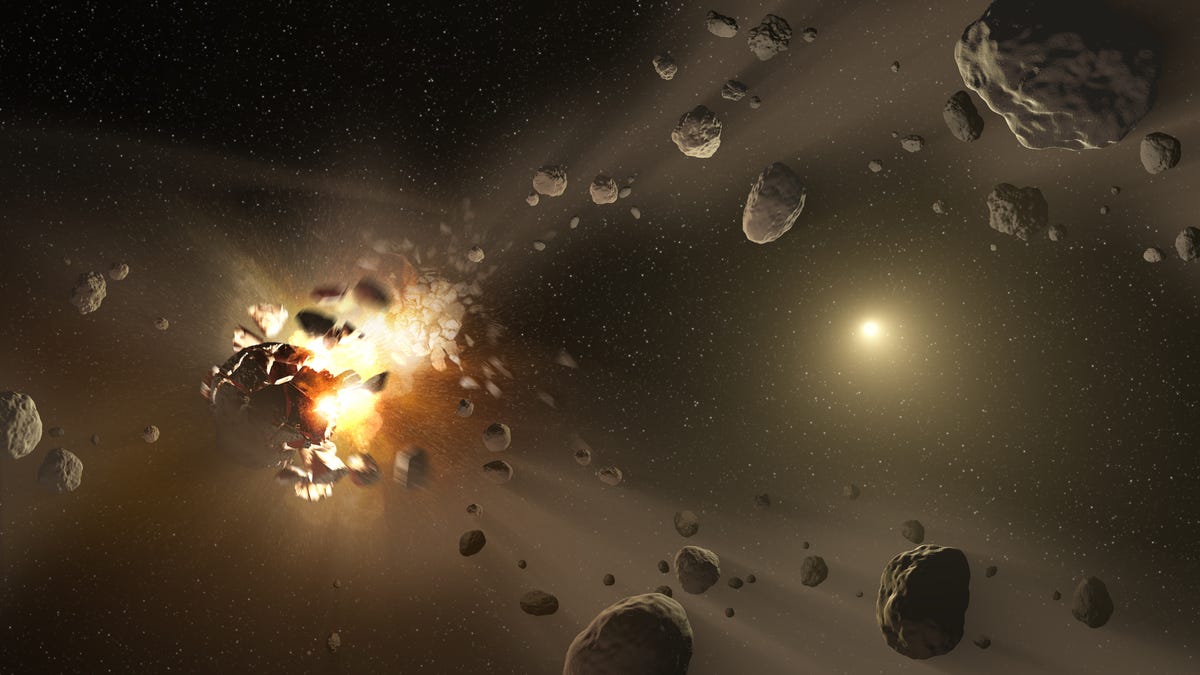Sneaky asteroid spotted whizzing between Earth and moon
A space rock large enough to do damage gives us a near miss just two days after being discovered.

An asteroid roughly the size of a 10-story building gave Earth a particularly close pass Monday morning.
Asteroid 2017 AG13 came within half the distance from Earth to the moon as it buzzed by early Monday morning at 4:47 a.m. PT. The fly-by happened shortly after scientists at the Catalina Sky Survey first discovered the space rock on Saturday.
As you can see in the GIF below, the asteroid looks to just barely miss us as it passes. In the cosmic sense, it really was a close shave. In real terms, Earth had well over a 100,000-mile (161,000 kilometer) buffer of distance.
2017 AG13 isn't so big it would have meant an extinction-level event had it been a direct hit. But if a good size chunk of it made it through Earth's upper atmosphere near a populated area, there might have been damage like we saw in 2013 when a bolide collided with the atmosphere over the Russian city Chelyabinsk. In that event, a fireball streaked over the city, releasing 500 kilotons of energy as it ran up against some serious resistance from Earth's atmosphere and exploded, blowing out windows all over town in the process.
The asteroid is about 36 to 111 feet (11 to 34 meters) across, according to the Slooh Observatory, and moving very fast relative to Earth at 10 miles (16 kilometers) per second. That speed, coupled with 2017 AG13's dim brightness level, made it difficult to spot with telescopes.
Various telescopes and sky surveys constantly scan Earth's neighborhood and track nearby asteroids. Most pass by at a distance several times farther away than the moon is to us, so this was a particularly close buzz by a previously unknown object.
In the video below, Slooh Astronomer Eric Edelman breaks down some of the basics of the asteroid.

